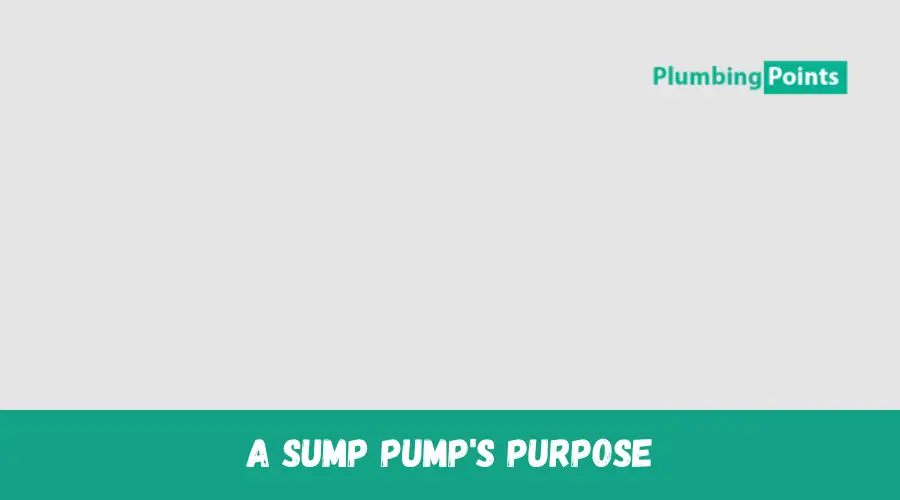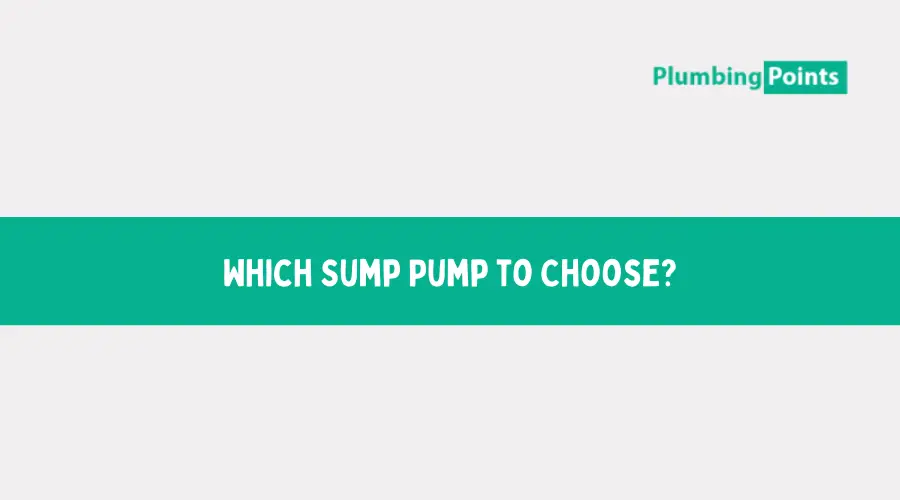Last Updated on January 2, 2023 by admin
Do you realize why a sump pump is installed? Numerous homeowners have them installed in the basements or attic spaces, but few are aware of the necessity of the sump pump. They periodically hear a motor working, accompanied by a sucking sound.
The function of a sump pump becomes much more apparent after one’s first purchase, even if one has never had one before. And a sump pump installation might prevent costly water damage to your basement. You’ll find a comprehensive breakdown of the purpose of sump pump and many different applications here.
Table Of Contents
- 1 A Sump Pump’s Purpose
- 1.1 Upkeep of the Structure
- 1.2 Spotting and Eliminating Mold, Mildew, and Bacterial Growth
- 1.3 Anti-Corrosion Measures for Home Appliances
- 1.4 Eliminating Malodors and Enhancing Air Quality
- 1.5 Homeowners Will Be Warned If Water Rises Above Their Basements
- 1.6 Increase in Property Worth
- 1.7 Sustaining Flood Insurance Standards
- 1.8 Restoring Soil Health
- 1.9 Sump Pump Types and Uses
- 1.10 Submersible
- 1.11 Pedestal
- 1.12 Battery-operated backup
- 1.13 Water-powered backup
- 2 Which Sump Pump to Choose?
- 3 Importance of Sump Pumps
- 4 Conclusion
A Sump Pump’s Purpose

A sump pump is defined. The primary goal is to dehumidify the space below ground, whether that’s a basement or a crawlspace. However, the following are some of the many more uses that are connected to this item that you may not have thought about:
Upkeep of the Structure
Water seeping up through the soil may erode the support structure of a building, particularly in areas with a high-water table. Because of the sump pump, any water that seeps into the basement is quickly evacuated.
Spotting and Eliminating Mold, Mildew, and Bacterial Growth
Inconvenient and even dangerous microbes thrive in environments with high levels of moisture in the environment and on objects. A sump pump may reduce their numbers by keeping the basement dry.
Anti-Corrosion Measures for Home Appliances
Your home’s appliances will corrode if they are left in a damp environment for any length of time after a basement flood. They may suffer internal problems as well, depending on how deep the water is.
Eliminating Malodors and Enhancing Air Quality
We can all agree that flood water is often unsanitary and may even include human feces. The removal of this water is a crucial function of the sump pump. The unpleasant aroma is only a precursor to far more serious issues.
Homeowners Will Be Warned If Water Rises Above Their Basements
High water alarms are standard on modern sump pumps. Some models even have low-water alarms. If a problem arises with a homeowner’s sump pump, they may quickly and easily summon professional assistance with the use of a sump pump alarm.
Contact a plumber whenever you have any suspicion that anything is amiss with your sump pump.
Increase in Property Worth
Although not required by law, most homebuyers recognize a quality sump pump when they see one. One of them is a home with a functioning sump pump.
To put it bluntly, a sump pump is no substitute for a jacuzzi in the master suite or marble in the kitchen. However, it is an advantage and a mark of a property that has been carefully maintained.
Sustaining Flood Insurance Standards
It’s likely that you already know you need flood coverage if you live in a flood zone or have had a pipe break in the past. Many insurance plans stipulate the installation of a sump pump or the implementation of other flood preventive actions.
Restoring Soil Health
A sump pump diverts wastewater away from your home and cellar, relieving hydraulic stress on the foundation and helping to stabilize the soil around it.
Sump Pump Types and Uses
Submersible pumps, pedestal pumps, battery backup pumps, and water backup pumps are the four most prevalent varieties of sump pumps.
Submersible
The pump and the motor are combined into one compact unit in submersible pumps. They are presently located in the basement, sealed within a basin while submerged. Submersible pumps are generally preferable to pedestal pumps for a number of reasons, including their lower operating noise levels, smaller footprint, and less likelihood of clogging. However, they may not survive as long as conventional sump pumps owing to the impact of water immersion. For properties in high-risk flood areas, this remains the best solution.
Pedestal
The pump and motor of a pedestal sump pump are kept dry on the ground. The pump itself is situated inside the basin, while the motor is elevated on a platform above the basin and connected via a hose. With the help of the hose, the pump can deliver the water wherever it’s necessary. Since the pump’s motor is kept above water, it lasts longer and is simpler to service than sump pumps that are completely immersed. As a result, it may be noisier and more cumbersome than a submersible pump.
Battery-operated backup
A battery-operated backup sump pump is an excellent flood prevention measure. The worst time for a power outage is during a storm, therefore a battery backup featuring a float switch ensures that your sump pump continues to work. The pump loses its primary source of power when the electricity is cut off. When the basin fills with liquid, a float sensor is activated, activating your battery system.
Water-powered backup
If your basin needs clearing, a water-powered backup may boost water pressure to do the job. When using a water-based power source, there is no requirement to check on the backup or swap out batteries. Extra water consumption dramatically increases your water bill and is often met with opposition. Some municipalities prohibit their installation.
Which Sump Pump to Choose?
For your family’s protection, it’s crucial that you choose a pump with suitable horsepower. Choosing a sump pump with less horsepower than is recommended for the likelihood of flooding in your location is a risky move. Meanwhile, the pump’s lifetime is shortened due to the cycling that results from having more horsepower than is required.

A third of horsepower is sufficient for a standard-sized house in an area with normal precipitation levels, provided the house is not constructed too deeply below the water table. A half-horsepower submersible pump might provide the extra power you seek if your property is situated lower on the water table, has more severe seepage concerns, or needs to evacuate the water from a greater distance. Lastly, a sump pump having 13000 GPH will handle the saturation if you routinely have serious flooding concerns or if you want to utilize the pump in an outdoor or industrial setting.
Compared to its plastic or metallic rivals, cast-iron core sump pumps have a longer lifespan. Since electric motors generate their own heat, excessive heat poses a serious risk to them. The cast iron core, which is in direct connection with the motor, is far more effective than plastics or stainless steel in removing the heat generated by the motor. There are pumps available with built-in alarm systems that could be useful to you. As a result, you will be alerted if the water level begins to rise excessively high due to elevated water volume or a pump malfunction.
Importance of Sump Pumps
Residences that are at risk of flooding need to have sump pumps installed. Flooding may be devastating to your home and well-being whether it is caused by heavy rains or a basement that was constructed underneath the water table. Several varieties of mold may grow in damp environments, increasing the likelihood of upper lung infections, allergic responses, and asthma difficulties even in the absence of flooding. Without proper drainage, water may pool in the basement and can cause flooding or mildew growth.
Conclusion
Foundation damage from water seepage and floods in the basements will need expensive repairs on the road. These repercussions will persist and intensify over time unless action is taken to mitigate the flooding crisis. Consequently, learning the role and purpose of sump pump is essential.
